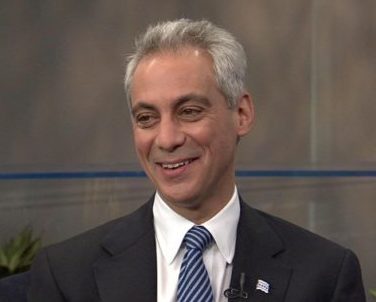Rahm Emanuel’s plan to require students in Chicago Public Schools starting in 2020 to “either [have an] acceptance to college or a gap-year program, a trade apprenticeship, military enlistment or a job offer” to get their diplomas is one that seems ideal on the surface. However, one must scrutinize this plan and understand that this won’t be a plan that leads to a “path toward a successful life”. Emanuel’s plan is one that seems extremely makeshift. Ultimately, he is forcing CPS students to find a “plan for the future” without considering the capacity of resources that CPS has or the backgrounds of students that will be most affected by this policy.
The two biggest ethnic/racial groups in CPS’s student body are Hispanic and African American students (46.5% and 37.7%, respectively). In addition, CPS states that 80.22% of its students are “economically disadvantaged students”. Therefore, the vast majority of students that attend CPS schools are both students of color and students from under-resourced backgrounds.
Emanuel’s plan is one that is not grounded in reality. CPS boasts a high-graduation rate of 73.5% and a college enrollment of 42%. However, a study conducted by the University of Chicago shows that even if students are graduating and a significant portion are attending college, only 17% of all CPS students will eventually graduate with a bachelor’s degree. Therefore, it is fair to say that CPS is failing to have more than half of its students enroll in college and that it might not be adequately preparing its students to attend college. So, why would Rahm implement a policy that allows for a “planning for the future” without considering that even if CPS students attend college, the likelihood of them graduating is very slim? In addition, the policy itself has many loopholes such as:
- A student could apply to a job that he/she may not want in the long-run but will suffice to meeting this rule. The students could ultimately quit their job after graduating and receiving their diploma which fails this “path towards a successful life” goal.
- Recruiters for armed force branches can now use this rule to further incentivize youth to join the armed forces. To have a recruiter incentivize poor, youth of color by informing them of benefits of joining the armed forces such as paying for their school, giving them monetary benefits, and also ultimately helping them earn a diploma is troublesome. Youth should be able to have guidance in making these decisions and not feel pressured to make a decision solely to meet a requirement that will give them their well-earned diploma.
This plan plan is not a solution, it is a plan that will only exacerbate the conditions that these youth face. The gaps in this plan make it even more problematic given that this plan does not provide ways in which students can easily fulfill this. There are so many unanswered questions such as:
- Will there be more counselors to assist youth in making these plans?
- Will there be pipeline programs in which CPS students can earn professional jobs that will contribute to the longevity of their success?
- Will CPS help youth earn more scholarships or partner with more organizations to make college more accessible?
Emanuel keeps exemplifying this elitism when it comes to implementing policies that ultimately fail our youth. His plan is one that may force kids to have to figure out what they want to do with their futures without assistance (this is especially worrisome for youth that are first-generation college students). Emanuel could have thought of many other solutions such as:
- Expanding a city-wide ethnic studies program to help boost graduation rates. A study conducted by Stanford University on San Francisco schools shows that ethnic studies programs could ultimately lead to positive academic outcomes.
- Revise curriculums to ensure that CPS graduates are prepared for college.
- Initiate a program to bridge cultural and language barriers between families and schools. While the biggest ethnic group represented by CPS students is Hispanic, only 20.9% of teachers and 15.6% of principals are Hispanic. With this in mind, we must then ask, “Are those who serve our youth incorporating the communities and families they serve?” And “Do teachers and principals in CPS exemplify the cultural humility to navigate environments where minority students are the majority of students they serve?” The importance of incorporating parents and communities in these youth’s education could lead to positive academic outcomes and could serve as a sustainable long-term support system for youth after graduating.
- Initiating a city-wide program where CPS students get training skills on how to be hired and setting up a pipeline program for youth to enter professional working fields.
The Chicago Public Schools and Emanuel need to serve our youth. They need strategic plans that will ensure that our youth are college and career ready. This plan is not a solution. Instead, it is a burden to our youth and nothing more than window dressing in lieu of a strategic, effective plan. If Emanuel and CPS want a step to understanding how they can serve our youth, they should start by reaching out out to those that are direct stakeholders of policies like this one — our youth, our communities, and our families.
Guillermo Camarillo
Latest posts by Guillermo Camarillo (see all)
- Ser un Estudiante Universitario y Quererte a Ti Mismo - August 23, 2017
- Being a College Student and Loving Yourself - August 9, 2017
- Plan de Emanuel “No Hay Plan, No Hay Diploma” No Habra Graduados de Preparatoria Listos Para Una Carrera Universitaria - August 8, 2017
- Emanuel’s “No Plan, No Diploma” Won’t Produce College and Career Ready HS Graduates - August 1, 2017
- Un Estudiante Universitario Pobre, Buscando Más - April 13, 2017

